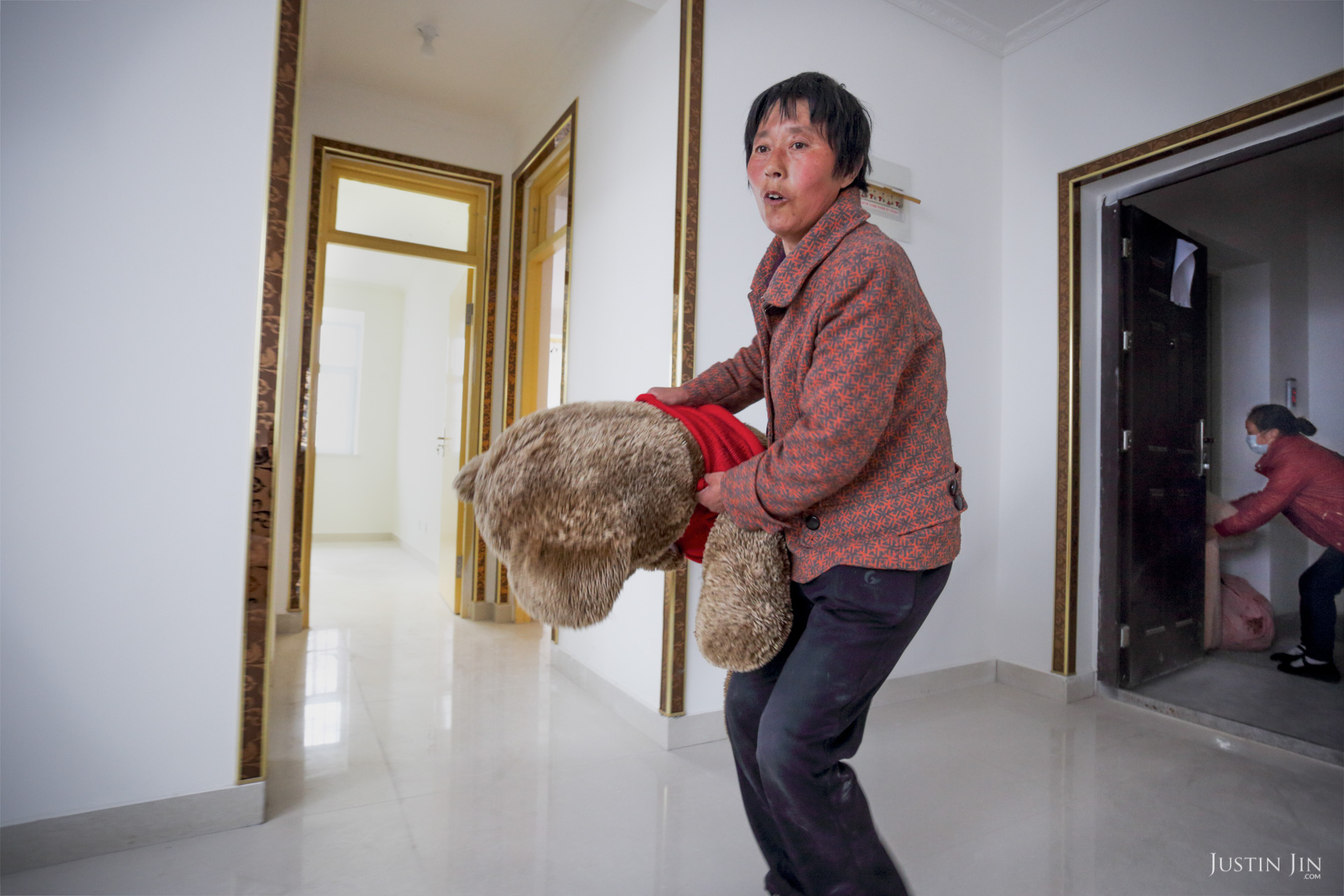Chen Hua, 50, moves into her new urban home in Liaocheng city in the northeastern Chinese province of Shangdong.
Her former village house was bulldozed by the government three years ago to make way for high-rise development.
In the four years between her rural home being razed and the completion of her new city apartment, she and her family lived in temporary village housing such as this one.
China is pushing ahead with a dramatic, history-making plan to move 100 million rural residents into towns and cities between 2014 and 2020 — but without a clear idea of how to pay for the gargantuan undertaking or whether the farmers involved want to move.
Moving farmers to urban areas is touted as a way of changing China’s economic structure, with growth based on domestic demand for products instead of exporting them. In theory, new urbanites mean vast new opportunities for construction firms, public transportation, utilities and appliance makers, and a break from the cycle of farmers consuming only what they produce.
Urbanization has already proven to be one of the most wrenching changes in China’s 35 years of economic reforms. Land disputes rising from urbanization account for tens of thousands of protests each year.
